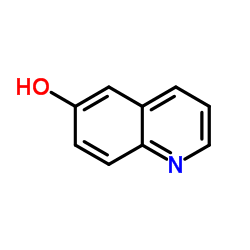Fluorescence characteristics of protonated form of 6-hydroxyquinoline in Nafion film.
M S Mehata, H C Joshi, H B Tripathi
Index: Spectrochim. Acta. A. Mol. Biomol. Spectrosc. 59(3) , 559-67, (2003)
Full Text: HTML
Abstract
Fluorescence characteristics of 6-hydroxyquinoline (6-HQ) have been studied at room temperature in Nafion(R) film by steady state and nano-second time-resolved fluorescence spectroscopy. The fluorescence spectrum exhibits single emission band corresponding to the protonated form of 6-HQ in this matrix. However, the decay fits with two or three exponential functions depending on the emission wavelength monitored. At blue edge of the emission, the decay fits to three-exponential function, whereas at longer wavelengths, the decay fits to bi-exponential function. Two tentative mechanisms have been proposed to explain the experimental data, viz. a closely lying charge transfer state (CT) or an excited state proton transfer (ESPT) process. The photophysical parameters appear to be sensitive to the change in microstructure due to swelling of the membrane by the solvents.
Related Compounds
| Structure | Name/CAS No. | Molecular Formula | Articles |
|---|---|---|---|
 |
6-Hydroxyquinoline
CAS:580-16-5 |
C9H7NO |
|
Synthesis and antimosquito properties of 2,6-substituted ben...
2013-07-01 [Eur. J. Med. Chem. 65 , 295-303, (2013)] |
|
TDDFT study of the polarity controlled ion-pair separation i...
2014-07-15 [Spectrochim. Acta. A. Mol. Biomol. Spectrosc. 128 , 280-4, (2014)] |
|
Excited-state prototropic equilibrium dynamics of 6-hydroxyq...
2010-11-08 [Chemistry 16(42) , 12609-15, (2010)] |
|
Excited state proton transfer in the Cinchona alkaloid cupre...
2010-10-21 [Phys. Chem. Chem. Phys. 12(39) , 12562-9, (2010)] |
|
Excited-state proton transfer via hydrogen-bonded acetic aci...
2011-01-13 [J. Phys. Chem. A 115(1) , 19-24, (2011)] |